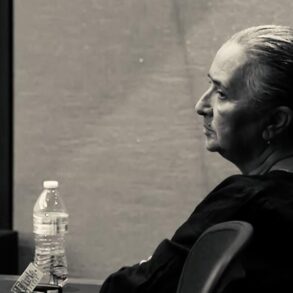How a New Approach to Public Defense Is Overcoming Mass Incarceration
June 15th should have been one of the best days of Mohammed Sanogo’s life. An honors student with a perfect G.P.A., he had just walked across the stage at his high-school graduation, in Delaware, and was looking forward to attending the University of Maryland Honors College to study aerospace engineering. Before he left the parking lot at the University of Delaware, where the ceremony was held, Sanogo, a Muslim, stopped to pray with a few friends. For reasons that are in dispute, a few minutes later, as Sanogo was driving away, campus police stopped his vehicle, demanded that he get out of the car, and, after he did, picked him up and threw him to the ground. Video shot by students at the scene shows officers kneeling on his back to cuff him, as Sanogo struggles to get out of their grip and shouts that he has a “condition”—asthma. He was arrested, charged with reckless driving and resisting arrest, and jailed. The future that he’d been imagining for himself just hours earlier—studying at Maryland, working for NASA—was replaced by the prospect of becoming yet another incarcerated young Black man.
But that is not what happened, after Sanogo’s case was assigned to the Delaware public defender’s office, in Wilmington. Five years ago, that office became one of two two-year pilot programs for Partners for Justice (P.F.J.), a scrappy nonprofit with an improbable mission: to transform the public criminal-defense system. (The other pilot program was in Alameda County, California, which includes the city of Oakland; both offices are still in operation.) Then as now, public defenders represent eighty per cent of all people charged with a crime, and they typically work in offices that are underfunded and understaffed. Their clients are primarily poor people of color who are often in need of health care, housing, transportation, addiction treatment, child care, and a host of other services. According to a report from the Prison Policy Initiative, “At least 1 in 4 people who go to jail will be arrested again within the same year—often those dealing with poverty, mental illness, and substance use disorders, whose problems only worsen with incarceration.” But lawyers are not social workers; they do not have the time or the skills to help their clients deal with those problems, even if those problems contributed to their criminal behavior in the first place and may do so again in the future.
As a public defender in Santa Clara County, California, and in the Bronx, Emily Galvin-Almanza, P.F.J.’s co-founder and co-executive director, with Rebecca Solow, witnessed this problem firsthand. “If you are a defender practicing in an office where there are only criminal-defense attorneys, it’s like being in a hospital with no nurses,” Galvin-Almanza told me. The way to change this dynamic, she believed, was to embed a cohort of advocates in each office to take on tasks that would boost a client’s chances for a good outcome, not just in court but in life. The advocates would be trained in storytelling so they could write a persuasive account of a defendant’s circumstances, and would help them navigate social services, find housing, enroll in benefits programs, and in other ways stabilize their lives. P.F.J. calls this approach “collaborative defense,” because the accused are working alongside the advocates and the legal team.
In Sanogo’s case, as soon as he was assigned a public defender, an advocate in Wilmington got to work. In less than a week, the advocate collected more than forty letters attesting to Sanogo’s good character. The advocate also wrote what his attorney, Misty Seemans, said was the best narrative about a client she had ever read, highlighting Sanogo’s accomplishments and explaining that he was the sort of young person who normally would have never got caught up in the criminal-justice system. After the prosecutor reviewed this “mitigation package,” the charges were dropped. Sanogo matriculated at Maryland this fall. (The University of Delaware maintains that the police officers acted appropriately, but said in a statement that it “will continue its review of this situation to look for learning opportunities.”)
In a way, providing this kind of support is not new. In 1990, the Vera Institute of Justice (where I once worked) opened the Neighborhood Defender Service in Harlem, a law office staffed with social-work interns, immigration experts, and client advocates, in addition to lawyers who specialized in a variety of practice areas. Seven years later, the Bronx Defenders was created by a group of lawyers and advocates who aimed to do something similar in the South Bronx; Galvin-Almanza worked there for a number of years. Both organizations have been remarkably successful in demonstrating that a holistic approach to criminal defense benefits the accused, their families, the community, and the public at large. A study by researchers at the University of Pennsylvania Law School and the RAND Corporation found that, over ten years, defendants represented by the Bronx Defenders spent more than a million fewer days behind bars, and well more than four thousand people avoided jail time entirely.
But what worked in New York City, Galvin-Almanza realized, was not necessarily transferrable to other municipalities. “Every public defender has their own culture and political context and challenges and community,” she told me. “And, if you just show them a New York City defender and say, ‘Hey, do this,’ they think, Oh, my God, I could never do that. I don’t know where to start.” But, she added, “If you say, ‘O.K., we’re going to take one element of this, and we’re going to bring it to your practice, and we’re going to build it for you, and we’re going to give you all the training you need to utilize it,’ we can get more defenders getting the results of a holistic defender.”
The right of a criminal defendant to “Assistance of Counsel for his defence” was established in the Sixth Amendment, which was ratified in 1791, though that assistance was limited to federal crimes. Not quite eighty years later, the Fourteenth Amendment insured that “nor shall any State deprive any person of life, liberty, or property, without due process of law; nor deny to any person within its jurisdiction the equal protection of the laws.” But those were just words, as Clara Shortridge Foltz, an early proponent of public defenders, noted in a speech delivered at the World’s Congress Auxiliary on Jurisprudence and Law Reform, in Chicago, in 1893. “For the conviction of the accused every weapon is provided and used, even those poisoned by wrong and injustice,” she said. “But what machinery is provided for the defense of the innocent? None. Absolutely none. For its lesser duty of convicting the guilty it has equipped and maintains an array and gives access to the public funds; for the higher one of defense of the innocent there is neither counsel nor officer nor money.”
It wasn’t until the unanimous 1963 Supreme Court decision in Gideon v. Wainwright that the Court established that anyone charged with a crime has the right to a lawyer, even if they cannot pay for one. “Reason and reflection require us to recognize that in our adversary system of criminal justice, any person haled into court, who is too poor to hire a lawyer, cannot be assured a fair trial unless counsel is provided for him,” Justice Hugo Black wrote in the Court’s opinion, adding that a fair trial “cannot be realized if the poor man charged with crime has to face his accusers without a lawyer to assist him.” But the Court did not determine how this was to be achieved.
Though the Gideon decision resulted in the proliferation of public-defender offices across the country, more often than not they were—and continue to be—afforded fewer resources than those who represent the government. In California, prosecutors are annually allocated a billion dollars more than public defenders. In New Orleans, the city budgeted six million dollars for the district attorney’s office, and a million and a half for public defenders in 2018. Consequently, public defenders are not only underpaid but saddled with enormous caseloads. Lawyers in Washington, Nebraska, Rhode Island, New York, and Maryland have reported that they are assigned around a thousand cases a year; a 2017 study estimated that in Louisiana approximately 3,679,792 hours of work would be required for attorneys to meet the annual public-defense caseload. And, with around ninety-seven per cent of federal cases and ninety-four per cent of state cases dispatched by plea bargains—many of them coerced when a prosecutor tacks on additional charges that threaten long jail sentences if the plea is not taken—it is no wonder that nearly two million people are incarcerated in the United States, which has more people jailed per capita than any other nation.
In 2019, then Senator Kamala Harris, a career prosecutor, introduced the Ensuring Quality Access to Legal Defense (EQUAL) Act, a bill that would, among other things, establish workload limits for public defenders and make their salaries commensurate with those of prosecutors. It went nowhere. The bill was reintroduced in 2021 and again failed to gain traction. It was revived once more this year in the House, where it is still pending, as is a comparable bill, introduced in March by the senators Cory Booker and Dick Durbin, to mark the sixtieth anniversary of Gideon v. Wainwright. GovTrack.us, a Web site that follows the trail of congressional legislation, gives the new Senate bill an eight-per-cent chance of adoption.
Even if Congress does not act anytime soon, P.F.J.’s successes suggest that some of the most pernicious structural impediments to due process are surmountable. Mohammed Sanogo may be an exceptional young person, but the outcome of his case was not. Galvin-Almanza told me that, in Delaware, in nearly ninety per cent of the cases in which a mitigation memo was submitted, P.F.J. clients receive no jail or prison time, and more than seventy per cent have their charges dropped. As a consequence, she estimates that P.J.F. has prevented six hundred years of incarceration in the state. (This is calculated from clients’ actual outcomes subtracted from their potential maximum sentences.) The pilot project was so beneficial that client advocates are now embedded in every county in Delaware, and the program, which was initially supported by philanthropic dollars, is now funded with public monies.
Delaware, of course, is a small state, and even Oakland, the site of the other pilot, has just about half the population of San Francisco, across the bay. But, even before the two-year demonstration projects had concluded, Galvin-Almanza and Solow were fielding calls from public-defender offices around the country. There are now P.F.J.-trained advocates in twenty-four locations as diverse as the Flathead Indian Reservation in Montana and the urban centers of Houston and Miami. By one estimate, they have prevented five thousand years of jail and prison time and, since this program reduces incarceration, it creates the option for jurisdictions to reduce their spending on jails. Every dollar spent on the P.F.J. program, then, creates the possibility of saving three to six dollars from the cost of operating a facility.
“We really, really want to live in a world where by 2030 you can’t find a public-defense agency that’s only doing criminal defense—where everybody has these capabilities to problem-solve and address the underlying drivers of crime and also help their clients avoid incarceration and find better opportunities,” Galvin-Almanza told me. She added, “I became a public defender because I couldn’t imagine myself waking up in the morning knowing there’s somebody sitting in jail, and I’m in a position to do something that could help bring them home. How could I not do this?” ♦
This post was originally published on this site be sure to check out more of their content.








